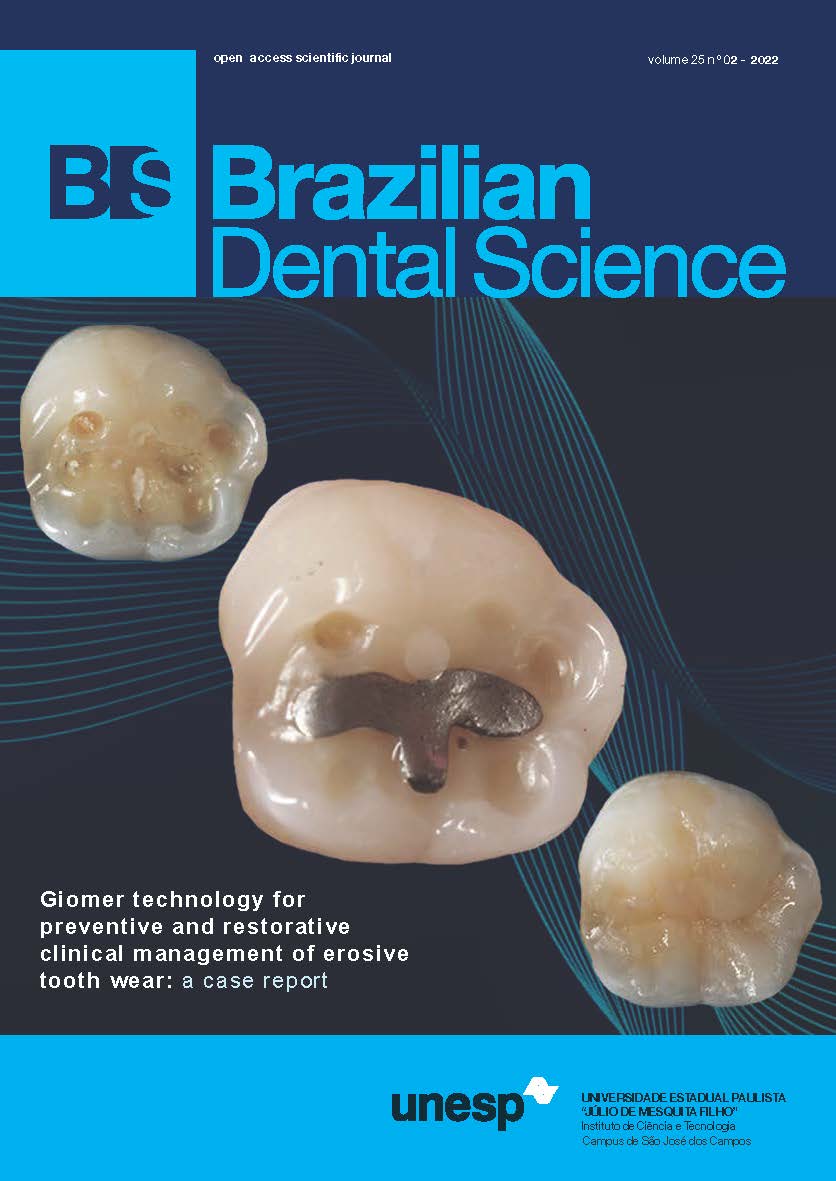Can bulk-fill compromise the curing potential in deep cavities?
DOI:
https://doi.org/10.4322/bds.2022.e2999Abstract
Objective: To determine the effect of the restorative technique, material’s opacity and the selected light
sources on the curing potential (CP) in deep cavities. Material and Methods: The radiant exitance (mW/cm2)
of two light curing units (Bluephase G2 and Radii-Cal) was determined at 0 and 8 mm distance from a power
meter sensor (Ophir). Two bulk-fill composites of regular consistency (Opus, FGM; and Filtek One, 3M) and a
conventional one (Sirius-Z, DFL) were considered and the level of their opacity were determined by a spherebased
spectrophotometer (SP60, X-Rite). The degree of C=C conversion (DC) was determined by spectroscopy
(FTIR-ATR) at 0.05 and 8 mm depths and the CP considered the ratio between them. The “incremental technique”
considered 4 increments of 2mm thickness each, whereas the “bulk-fill technique considered 2 increments of
4mm-thickness. Data were submitted to analysis of variance and Tukey’s test (95%). Pearson’s correlation tests
were performed to calculate the possible relation between curing potential and materials’ opacity. Results: With
the incremental technique it was possible to achieve high CP regardless of the light source. The CP of bulk-fill
composites was dependent on the light source, whereas Radii-Cal compromised the DC at 8 mm for both materials.
The correlation between opacity and CP was dependent on the light source (r = 0.891707246 for Radii-Cal; r =
0.515703768 for Bluephase G2). Conclusion: The bulk-fill technique was dependent on the light source while
the incremental was not. The influence of materials’ opacity was dependent on the light curing unit.
KEYWORDS
Conversion; Opacity; Resins; Light curing.
Downloads
Downloads
Published
How to Cite
Issue
Section
License
Brazilian Dental Science uses the Creative Commons (CC-BY 4.0) license, thus preserving the integrity of articles in an open access environment. The journal allows the author to retain publishing rights without restrictions.
=================




























